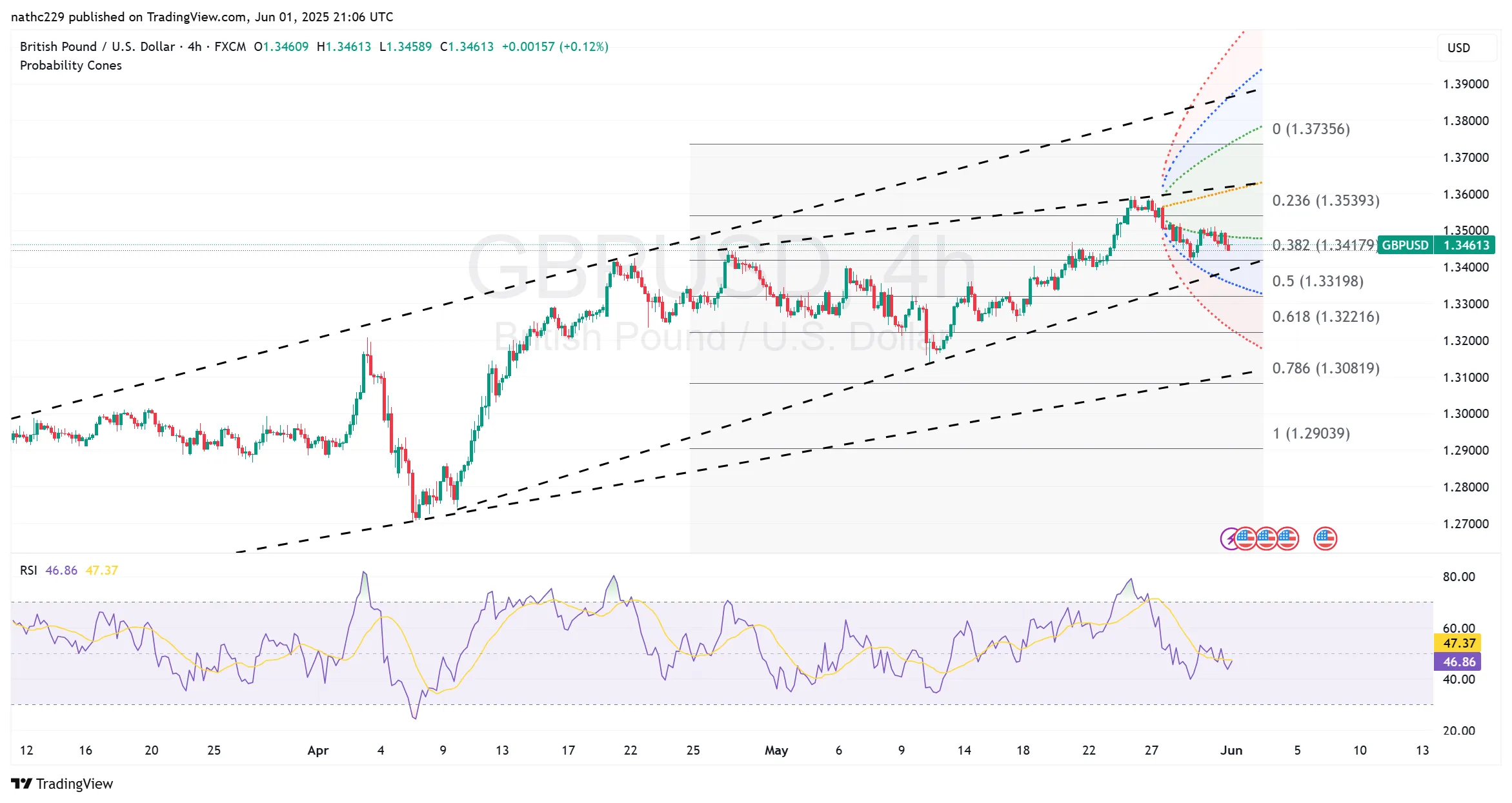
Sterling falters again above 1.35, but shallow pullbacks and resilient momentum keep bulls hopeful
Sterling falters again above 1.35, but shallow pullbacks and resilient momentum keep bulls hopeful
Technical Analysis:
GBP/USD retreated on Friday, once again failing to sustain gains above the critical 1.3500 level, marking the sixth consecutive session in which sterling has stalled at this key resistance. The currency pair peaked at an Asia session high of 1.3510 before falling back to an intraday U.S. session high of 1.3498. Subsequent weakness during the North American session was partly driven by month-end portfolio adjustments and renewed dollar strength following the release of broadly in-line U.S. core PCE data. More notably, a significant $55 billion decline in the advanced U.S. goods trade deficit suggested that President Trump’s tariff strategy may be positively impacting U.S. GDP—boosting Treasury yields and underpinning the dollar, placing additional downward pressure on cable.
Nevertheless, technical conditions for sterling remain broadly supportive, despite repeated failures at key overhead resistance. GBP/USD continues to find persistent underlying demand on pullbacks, evident in shallow retracements observed after each failed attempt above 1.3500. Year-to-date, sterling is still up an impressive 7.6%, and the pair remains approximately 1% higher for May alone, highlighting sustained underlying bullish momentum. Technical indicators, including daily RSI and MACD, remain positively configured, reinforcing a bullish bias as long as the pair sustains trading above the key Fibonacci support at 1.3367—the 50% retracement level of the recent 1.3140–1.3593 rally.
